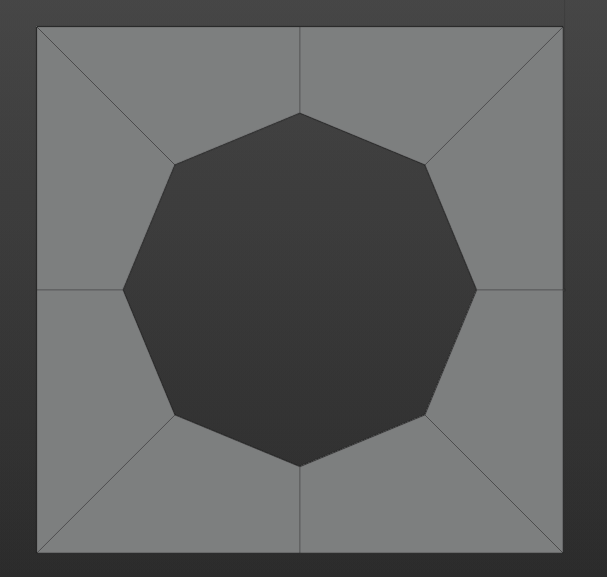The BRAWL² Tournament Challenge has been announced!
It starts May 12, and ends Oct 17. Let's see what you got!
https://polycount.com/discussion/237047/the-brawl²-tournament
It starts May 12, and ends Oct 17. Let's see what you got!
https://polycount.com/discussion/237047/the-brawl²-tournament
Topology of circles inside flat faces
I have a question regarding a specific topology situation. It may be obvious for some, but i've never received an "Official" answer, so i might as well ask.
Let's say i wanted to model a circle inside a flat face of a videogame prop.
To keep the polycount extremely low i then decide to create an 8 sided circle, like this one.

Pretty simple, but let's say that i don't care about the polycount. I would then create a much smoother circle, but if i stick to the same "modeling technique" form before i would have, in my opinion, something inefficient. Like this one.
I noticed, from many models aound the internet, that people do not create circles like that, but instead create them like this.

Here is my question:
If the object doesn't need to be animated or deformed, and it's sole purpose is to look good to the eye, is the topology of the last example correct and professionally accepted?
Thank you very much for your time.
Let's say i wanted to model a circle inside a flat face of a videogame prop.
To keep the polycount extremely low i then decide to create an 8 sided circle, like this one.

Pretty simple, but let's say that i don't care about the polycount. I would then create a much smoother circle, but if i stick to the same "modeling technique" form before i would have, in my opinion, something inefficient. Like this one.

I noticed, from many models aound the internet, that people do not create circles like that, but instead create them like this.

Here is my question:
If the object doesn't need to be animated or deformed, and it's sole purpose is to look good to the eye, is the topology of the last example correct and professionally accepted?
Thank you very much for your time.

Replies
If you have even more edges in your circle then they become longer and thinner, so you might add a ring around the circle and gradually step the number of edges down as it radiates outward.
One other thing to keep in mind is how quads get triangulated. If you export as quads some render engines might flip the "hidden edge" so it goes across the hole in the middle. You can create a visible edge to force it to triangulate properly or export as tris, but it really depends on what you're doing.
Generally you want to have as few verts/tris/edges as possible, unless it causes artifacts or a workflow issue, then add geo to address those issues.
Wow, i've never thought of that! I'll definitely try this techique.
http://wiki.polycount.com/wiki/SphereTopology